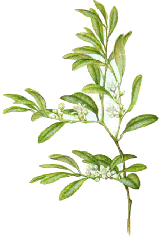U.S. hunts for evidence of supercoca plant
By Dan MolinskiBOGOTA, Colombia — Authorities suspect a new threat is lurking in the mountains and jungles of Colombia. Not a new rebel cadre, but altered coca plants that are bigger, faster-growing and produce more of the compound that gives cocaine its kick.
ASSOCIATED PRESSU.S. drug agents are trying to confirm the existence of the rumored plant in this Andean nation, the world's prime supplier of cocaine. The U.S. Embassy said it has seen no evidence that it exists.
But a scientist who advises Colombia's narcotics police says he has already spotted it in prime coca-growing regions, with the new plants towering over conventional ones, which typically reach heights of 5 feet. Others say that they also have seen the bigger, more robust plant.
"What we hadn't been able to do is find evidence of the plant, but now we are finding it," said Camilo Uribe, the scientist.
Mr. Uribe said that he found the new plants, rising 7 to 10 feet, in the Sierra Nevada in northern Colombia and in La Macarena, a region of savannah and jungle in central Colombia.
"They were giant bushes, with really big leaves," Mr. Uribe said, adding that the leaves produce higher concentrations of alkaloid, the compound that gives cocaine its high.
Giant coca plants also have been spotted in the state of Putumayo, historically a major coca-growing region in southern Colombia, where locals call the new varieties White Bolivian and Black Bolivian.
In a recent forum in Bogota, Eder Sanchez, a peasant leader from Putumayo, said that the Black Bolivian variety is more resistant to herbicides than Tingo Maria, which for years was a favorite among coca growers.
If an herbicide-resistant plant has appeared, it could weaken a pillar of Washington's multibillion-dollar counternarcotics effort in Colombia — the massive aerial fumigation of Colombia's coca plantations that aims to keep cocaine off U.S. streets by attacking its source.
"We are currently looking at allegations of leaves that are more resistant to spray," a U.S. Drug Enforcement Administration official said from Washington.
Peasants who grow coca, which is "taxed" by rebels and their right-wing paramilitary foes, have for years tried to fend off the effects of herbicide by glazing the leaves with sugar water before the spray planes arrive, or by cutting the bush near ground level after spraying, in hopes that it will grow back.
While it is not clear whether drug traffickers have created an herbicide-resistant coca bush, Mr. Uribe said that he has seen unofficial reports that suggest they are investing to develop such plants.
Experts say scientists theoretically could manipulate coca bushes to be resistant to the herbicide glyphosate, which is used in the fumigation campaign in Colombia and a version of which is sold commercially by the U.S. company Monsanto under the name Roundup.
Brent Sellers, an expert in weed science at the University of Missouri, said that a new strain of coca plant could be developed that is resistant to Roundup, based on the fact that Monsanto sells corn, soybeans and canola that are bio-engineered to resist it. Such products, called "Roundup ready," permit farmers to spray for weeds without harming their food crops.
Mr. Sellers also said that even without manipulation, "if you spray any plant species over and over and over again," it can develop resistance to the herbicide.
Phyllis Powers, director of the U.S. Embassy's Narcotics Affairs Section, said yesterday there is no evidence of attempts to genetically engineer coca plants.
"We regularly hear rumors that narco-traffickers are working to create a transgenic form of coca, but there is no scientific proof that they have undertaken such research, nor that they have produced a coca plant that produces a higher concentration of alkaloid and is glyphosate-resistant," she said.
Refs
Home
Supercoca?
Cocaine, Inc
Pablo Escobar
Mexican cocaine
Cocaine resources
Colombian cocaine
Benjamin Arellano Felix
Colombian-UK connection
Shooting down planes to resume
